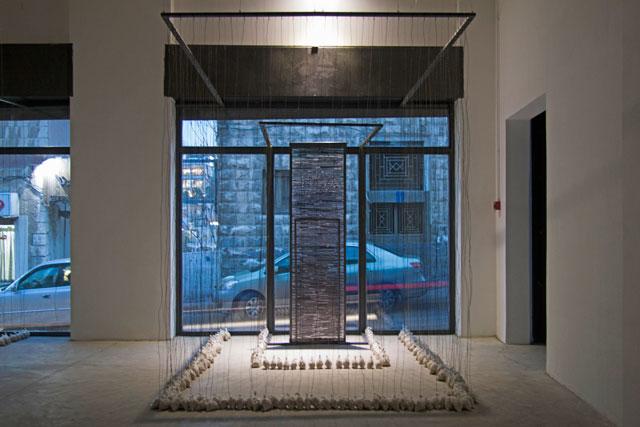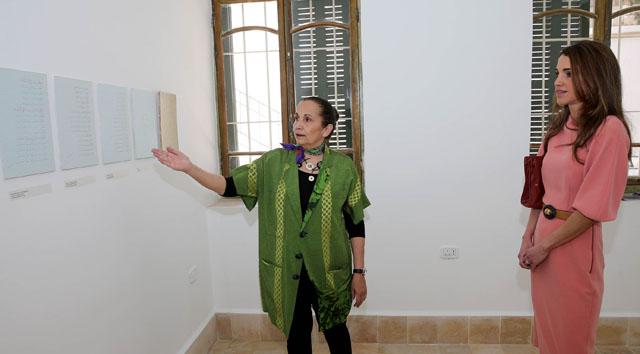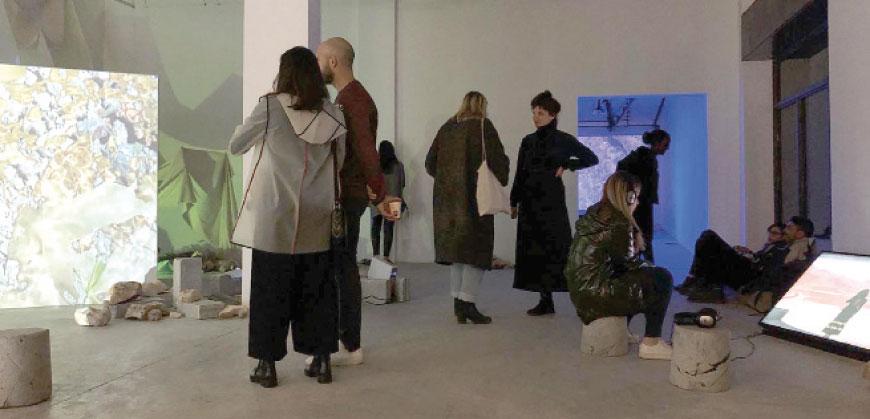You are here
Jordanian mixes art and architecture in visually engaging display
By Ana V. Ibáñez Prieto - Dec 10,2017 - Last updated at Dec 10,2017

The exhibition uses Darat Al Funun’s The Lab’s space to display several art-themed windows (Photo courtesy of Mais al Azab)
AMMAN — Art and design become an essential part of the city’s infrastructure with “Window – Space”, the new exhibition by Jordanian architect and designer Mais Al Azab which was opened on Saturday at Darat Al Funun.
Running through December 26, the exhibition proposes to gear The Lab’s space at Darat Al Funun toward the urban streets, taking the space’s storefront-like façade as its prime object.
“By activating the facade and having a presence in the street, the exhibition is a design statement for art to be an essential part of the city’s infrastructure, emphasising the role it plays in igniting life in the urban fabric,” the architect told The Jordan Times in a recent interview.
Meant to be viewed from the street, several art-themed display windows at the gallery offer an experimental creative show which seeks to attract artists, designers and general public alike, prepared with the help of all participants in a “creative material reuse” workshop.
During the week-long workshop leading to the exhibition, several designers conceived “three very experimental cast panels made of industrial metal scrap that were distributed according to a rhythm relating to that of the Lab’s façade”, according to the architect.
Sarah Abu Baker, Asmaa Abu Sadh, Buthaina Aburoza, Mousa Al Akhras and Talal Alkhori are among the designers who participated in the workshop.
This exhibition is the last addition to Azab’s extensive work in the borderline area between art and architecture, which started with the construction of the harmonious skyline of a Mirage City as part of an Angolan artist’s proposition in the desert of Jordan in 2013.
“I work and invest mainly in art and architecture installations, and working on installations is a form of exploring spatial and architectural ideas at an experimental, smaller scale,” the architect said, adding that “this scale is very liberating as it allows me to design, create and build ideas on an artist-model without being limited by a service-based profession.”
Related Articles
AMMAN — As soon as Jehad Ameri graduated from school 22 years ago, he began looking for a centre to further enhance his artistic skills.&nbs
Her Majesty Queen Rania on Monday visited Darat Al Funun, marking the 25th anniversary of its establishment as a home for the arts and artists of Jordan and the Arab world.
AMMAN — Darat Al Funun is accepting applications until December 31 from creative practitioners for its 2020 programme at its Lab in Amman.Th


















